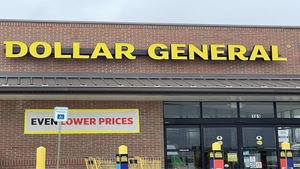Grocery E-Commerce 2.0 Update: Little ProgressGrocery E-Commerce 2.0 Update: Little Progress
Report card on food retailers’ digital strategies finds low scores overall. A report card on food retailers’ digital strategies finds low scores overall in their ability to merge the physical and digital worlds of grocery shopping.
December 2, 2019

Eighteen months ago, I wrote a piece about why retailers’ first-generation efforts to move online were not enough, that many retailers had jumped into e-commerce without a solid, comprehensive digital customer engagement strategy. And sadly, 18 months later, it appears there has been little progress.
There is no doubt that shopper demand for online grocery shopping is real. Study after study shows a significant number of shoppers have tried buying groceries online. The issue is not demand; instead, it is how well grocery retailers are delivering against that demand. Traditional retailers’ online efforts have been half-hearted. Online shopping is not yet profitable, and operating physical stores is more comfortable. But if traditional supermarket retailers fail to deliver what shoppers are demanding, someone else will.
A recent exploration across a dozen or so websites of well-known regional and national retailers shows the sad state of online grocery shopping and highlights the challenging overall customer digital experience. For example:
On many retailers’ websites, it is impossible to view the store-level product catalog; all you can view are the weekly ad items and specials. To search for and view products, you have to choose “online shopping,” which sends you down a different path.
The information available to the shopper is dependent on the path initially chosen (shop online or peruse ad items). Under “shop online,” some retailers provide filters such as organic, vegan and gluten-free to use in helping shoppers find relevant products. When searching ad items and specials, those filters are missing.
Under "shop online" on one well-known retailer’s site, many of the products were marked “only available in-store,” which makes one wonder why they are even presented.
Transitioning across devices while shopping is even more daunting. The master of this seamless shopping capability is Amazon; a shopper can begin an order on their desktop computer and shift to their tablet and then to their smartphone, all without missing a beat. The shopping cart is updated in real time.
If that’s not enough, retailers are missing a massive opportunity to create the digital equivalent of impulse purchasing by suggesting relevant products personalized to the specific shopper. A growing number of the largest retailers have turned to monetizing their website traffic through display ads sold to CPG brand manufacturers. Sure, presenting hamburger rolls to a shopper who has just placed hamburger patties in their shopping cart makes sense—unless the shopper happens to have a gluten intolerance.
The first generation of online shopping—e-commerce 1.0—created siloed experiences as retailers turned to one of the many online shopping solution providers happy to supply an end-to-end solution, from the digital front end to order management and fulfillment. It's not a bad idea, but a growing number of retailers are realizing that they have created a separate silo of engagement, apart from their other digital offerings. Other retailers simply outsourced online shopping to a third party, handing over valuable data and customer relationships.
A growing number of retailers are at last coming to the realization that shopping online is just one activity within broader, more comprehensive digital engagement. As I wrote 18 months ago, seizing the digital opportunity means taking a different view of e-commerce.
The e-commerce 2.0 retailer separates the all-important customer user experience from the operations of order fulfillment. The e-commerce 2.0 retailer owns the entire digital customer experience, retaining valuable customer relationships while being able to provide new services such as organizing the customer’s list by aisle for their favorite store or real-time product and recipe suggestions when the shopper is in the store.
The shopper is able to flag favorite products, receiving a notification whenever the products go on sale or a coupon is available. The shopper can browse the entire store-level product catalog using powerful search and filter tools to quickly find products of interest. Expanded nutritional information is available along with sustainability info. The shopper can self-identify specific health conditions that are used to drive recommendation of beneficial products powered by leading-edge nutrition science. The entire experience is contextually relevant, with personalized search and relevant recommendations to aid in product discovery. Lastly, placing desired items on the shopping list, the shopper can make the decision to shop for themselves or to send the list to the store for click-and-collect or home delivery.
Implementing e-commerce 2.0 requires a retailer to overhaul many of their legacy systems to provide real-time insight to store-level inventory, implementing predictive and strategic personalization and contextual relevancy capabilities; developing a comprehensive, seamless digital front end; and securing granular, expanded product nutrition data.
Amazon gets this and is already moving to more tightly integrate the Whole Foods online shopping experience with the primary Amazon platform used by tens of millions of shoppers. Rather than have online grocery shoppers have to figure out a new experience, Amazon is enabling shoppers to peruse the product offerings of their local Whole Foods store, filter the selection by a growing number of special dietary needs and interests and place products in the Amazon cart many are familiar with. Tied to expedited two-hour delivery in many markets, this is a powerful combination.
Supermarket retailers must realize that they are no longer in charge of innovation—shoppers are. And shoppers are rapidly adopting new technologies and growing accustomed to new experiences provided by digital deities such as Amazon. The opportunity to powerfully merge the physical and digital worlds of grocery shopping is awaiting those retailers ready to truly place the customer at the center of innovation.
Gary Hawkins is the founder and CEO of the Center for Advancing Retail & Technology. Reach him at [email protected].
About the Author
You May Also Like




